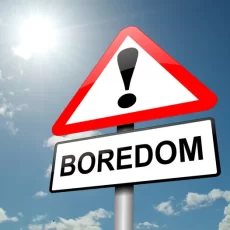In 1913 Maximilian Ringelmann, a french engineer, studied the performance of the horses. He concluded that the power of two animals pulling a coach did not equal twice the power of a single horse. Surprised by the result he extended his research to humans. He had several men pull a rope and measured the force applied by the each individual. On average, if two people were pulling together, each invested just ninety three percent of their individual strength, when three pulled together it was 85% and with eight people just forty nine percent.
Science calls this the social loafing effect. It occurs when individual performance is not directly visible, it blends into the group effort. It occurs among rowers, but not in relay races, because here, individual contributions are evident. Social Loafing is rationale behaviour, why invest all of your energy when half will do – especially when this little short cut goes unnoticed? Quite simply, social loafing is a form of cheating of which we are all guilty even if it takes place unconsciously, just as it did with Ringelmann”s horses.
When people work together individual performances decrease. This is not surprising. What is noteworthy, however is that our input does not grind to a complete halt. So what stops us from putting our feet up completely and letting the others do all the hard work? the consequences, zero performance would be noticed and it brings with it weighty punishments, such as exclusion from the group or vilification. Evolution has lead us to develop many fine tuned senses, including how much idleness we can get away with and how to recognise it in others. Happyho also provides best Meditation and Tarot classes in Noida and Delhi NCR India area
Social Loafing does not occur solely in physical performance we slack off mentally, too. For example in meetings the larger the team the weaker our individual participation. However, once a certain number of participants is involved, our performance plateaus. Whether the group consists of twenty or hundred people is not important – maximum inertia has been achieved.
One question remains: Who came up with the much vaunted idea that team’s achieve more than individual workers? may be the Japanese. Thirty years ago they flooded global markets with their products. Business economists looked more closely at the industrial miracle and saw that Japanese factories were organised into teams. This model was copied – with mixed success. What worked very well in Japan could not be replicated with the Americans and Europeans – perhaps because social loafing rarely happens there. In the west, teams function better if and only if they are small and consists of diverse, specialised people. This makes sense, because within such groups, individual performances can be traced back to each specialist.
Social loafing has interesting implications. In groups, we tend to hold back not only in terms of participation, but also in terms of accountability. No body wants to take the rap for the misdeed or poor decisions of the whole group. a glaring example is the prosecution of the Nazi’s at the Nuremberg trials, or less controversially any board or management team. We hide behind team decisions. The technical term for this is diffusion of responsibility. For the same reasons teams tend to, take bigger risks than their members would take on their own. The individual group members reason that they are not the only ones who will be blamed if things go wrong. This effect is called risky shift, and is especially hazardous among company and pension fund strategists, where billion are at stake or in defence department, where groups decide on the use of nuclear weapons.
In conclusion people behave differently in groups then when alone ( otherwise their would be no groups). The disadvantages of group can be mitigated by making individual performances as visible as possible. Long live meritocracy! Long live the performance society.





